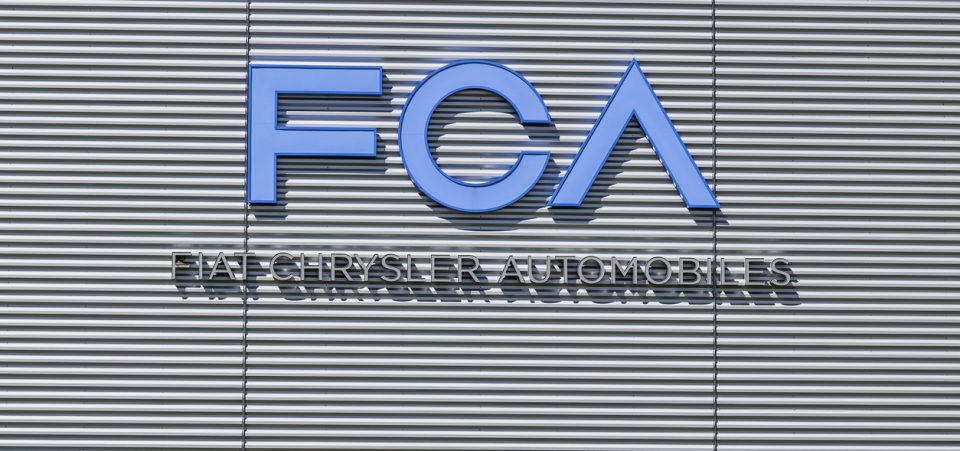The Death of CEO Sergio Marchionne Could Trigger a Financial Crisis
Sergio Marchionne, the CEO of Fiat Chrysler Automobiles NV (NYSE:FCAU), has died. Without him at the wheel of Fiat Chrysler Automobiles (FCA), the whole of Italy risks economic collapse. With it, the world risks another financial crisis. If ever there were a CEO that contributed to the revival of a whole country’s economy, it was Marchionne.
In the weeks and days that preceded Marchionne’s untimely passing, Fiat Chrysler was rather blunt about its accounts. The market did not like it, shaving over 10% off FCAU stock’s value.
FCA replaced Marchionne on July 21, 2018, when it became clear that his health was not going to recover. Nevertheless, apart from the board’s genuine sadness, observers would have been struck by the company’s clarity and honesty as it announced cuts in projected earnings and revenues.
Investors and Markets Prefer Optimism, Even if It Is Fake
Investors today don’t like “honesty,” and they despise modesty. FCAU stock started to drop when Fiat Chrysler expressed its pessimism for 2019, losing some 15% in a week.
FCA had not made that kind of bad noise in years. And it will take some time before investors have their confidence restored.
Marchionne had turned the company, all but left for dead after the 2008 financial crisis, into a veritable giant slayer.
It’s not an exaggeration to say that Marchionne not only saved Chrysler and Fiat, but he revived and transformed the respective brands that make up FCA into major global competitors again during his 14 years as CEO.
So effective was Marchionne’s leadership that FCA paid back post-2008 U.S. and Canadian government loans, totaling over $7.5 billion in 2011: earlier than scheduled.
Marchionne Could Navigate a Financial Crisis and Reach His Destination
Marchionne was a captain of industry in the Christopher Columbus or Magellan sense of the term.
He was the CEO who, while equipped with an MBA, had earned his degree in philosophy first.
He had multiple interests, among them classical music and jazz.
Clearly, he was well-rounded. He was one of those people to whom “having a vision” was a way of life rather than an average business book cliché.
Marchionne was more important to Fiat-Chrysler than Steve Jobs was to Apple Inc. (NASDAQ:AAPL) or Elon Musk to Tesla Inc (NASDAQ:TSLA).
He saved two automotive giants in two continents from certain death after the deepest financial crisis since the Great Depression—Fiat S.p.A. in Italy and Chrysler Corporation in the United States—bringing them together under the same roof.
Enthusiasm and Ambition
As an automotive enthusiast, his greatest achievement was to have Alfa Romeo Automobiles S.p.A. build a sports sedan from scratch in three years, a sedan more than capable of beating all its German rivals—from Bayerische Motoren Werke AG (ETR:BMW), Mercedes Benz, and Audi AG (ETR:NSU)—out of the box.
Marchionne also revived the Alfa Romeo marque, infusing enthusiasm and bringing the famed company (from which Ferrari itself would be born) back to North America after more than a 20-year hiatus with the “Giulia” sedan, “Stelvio” SUV, and “4C” sports car.
After swallowing up a moribund Chrysler, a hot potato that its former owner Daimler-Benz AG was anxious to get rid of, Marchionne wanted to merge with General Motors Corp. (NYSE:GM).
Or, rather, wanted to buy out General Motors.
Now, it’s Fiat Chrysler that must watch out for many hungry predators—Volkswagen AG (ETR:VOW3), in particular, has a special appetite for FCA’s Alfa Romeo.
Marchionne turned Ferrari, the Fiat Group family jewel, around as well. He spun it away from Fiat as a separate corporate entity while retaining a “family” control.
The future of automobiles might be electric, and Marchionne had already set the course for the FCA group in that direction, setting its scope on Tesla Inc.
Just two weeks before passing, FCA unveiled a plan to compete with Tesla head-on.
Marchionne wanted to go after the electric car maker with a whole new lineup of electric luxury and high-performance vehicles. (Source: “‘We’re going after Tesla’, says Fiat-Chrysler with their new EV plan,” Electrek, July 10, 2018.)
After revealing complications following an operation due to an illness he had kept secret, Marchionne’s successor was announced on July 21.
Succession and Uncertainty
Mike Manley, who headed FCA’s Ram division, will take over the group. Marchionne unveiled his last industrial plan in June and leaves the company debt free—an amazing achievement, notwithstanding all the others.
Marchionne’s departure leaves many questions; especially as the world has entered what promises to be a highly risky economic phase.
Before Marchionne died, FCA revised its outlook downward for the second half of 2018 and FCA stock suffered repercussions, slipping on Wall Street and Europe some 10%. But Marchionne’s death leaves great uncertainty.
Will Manley manage to continue what he started?
He faces the unenviable task of convincing investors that FCA can continue to grow and that he, as CEO, can continue to pursue Marchionne’s vision.
Apart from feelings of respect and admiration for Marchionne, many investors who put their faith in FCA cannot help but feel worried for the fate of the company now.
The Dark Clouds of Another Financial Crisis
Indeed, given the stakes, Marchionne’s passing could herald the return of dark times over the Italian, European, and, of course, the American economies.
In other words, FCA stock’s performance might be the messenger of bad tidings in the markets: another financial crisis.
Or, from another perspective, Marchionne’s FCA managed to mask Italy’s economic troubles, which the 2008 financial crisis appears to have made chronic.
The uncertain path that FCA faces now has removed any illusion of recovery in Italy.
The Italian economy has been stagnating for two decades. But while many are right in blaming the euro, that’s only part of the problem. Perhaps, not even the biggest part.
The automotive industry is a mirror for the Italian economy. From that perspective, Italy’s economic crisis precedes the euro.
Consider that Italy’s automotive industry today produces half the cars it made in 1989: 2.2 million cars in 1989 vs 1.01 million in 2015.
All That’s Left Is to Demonize the Euro
Given the undeniable favors that the euro has done for German exports and the German economy, most Italians will forget that the economic decline (given the decline of the auto sector) started the decade that preceded the euro.
Italians have reason to be angry.
The country’s gross domestic product (GDP) has dropped since the days of the good old lira (16 years ago). Unemployment might be 11%, taking the most optimistic statistics, while the country bears the brunt of the illegal migrant crisis.
In this already dire context, the euro has halved the purchasing power for most Italians compared to the lira.
There are many problems in which to find a culprit, and the euro is a convenient target—and not without reason.
For all of the euro’s ills, the current slowdown owes more to the 2008 financial crisis. Italy, already indebted on the eve of the Lehman Brothers Holdings Inc. implosion, has gotten much worse.
Automotive production was the key to the decades of miraculous growth after World War 2.
By 1970, Fiat S.p.A. (without Chrysler) was the world’s fourth-largest automotive group.
In 1990, the Italian auto sector, dominated by Fiat, was the fifth-largest in the world.
Today, it occupies 19th place.
Spain, which does not have an independently owned marque—SEAT, S.A. is owned by VW—makes more cars than Italy.
The reasons are complex and begin with the sudden opening of the Italian market to competitors from Japan and Korea in the early 1990s.
The Crisis Without End
Suffice it to say, Fiat entered a period of crisis in the mid-1990s. And this crisis brought Italy’s economy to its knees. Fiat’s recovery, led by Marchionne, was quite simply Italy’s recovery.
But that recovery won’t come. Or, if it does, it will be limited and will concern the sports and luxury segments, which are largely sold in foreign markets. Most Italians cannot afford such cars any longer.
Italy’s economy remains dominated by small and medium companies. They have struggled to compete in the world of globalization and increased competition.
Most Italians, even while aware of the internal struggles, will understandably look for a cause. The new government, led by “populist” political parties, will encourage them to blame the euro and the European Union.
The euro will come under pressure and the European Central Bank (ECB) has already announced the end of quantitative easing (QE) by 2019.
The overall picture for a continued recovery for the Italian automobile industry without the leadership of one of the world’s top CEO’s—perhaps the top—is pessimistic at best.
A financial crisis appears on the horizon.






